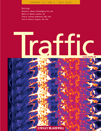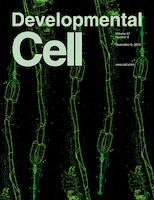
EUROPEAN JOURNAL OF HISTOCHEMISTRY
Scope & Guideline
Pioneering open access to vital biomedical discoveries.
Introduction
Aims and Scopes
- Histochemical Techniques and Applications:
The journal emphasizes various histochemical techniques, including immunohistochemistry and in situ hybridization, to explore cellular structures and functions. - Cellular and Molecular Biology:
Research articles frequently delve into cellular and molecular mechanisms, utilizing histochemical methods to elucidate biological pathways and disease processes. - Pathology and Disease Mechanisms:
The journal publishes studies that investigate the histochemical aspects of diseases, including cancer, neurodegenerative disorders, and inflammatory diseases. - Developmental Biology and Morphology:
Contributions often highlight the histochemical characteristics of tissues during development and aging, providing insights into morphological changes. - Nanomedicine and Bioengineering:
The journal includes research on the application of histochemical techniques in nanomedicine, focusing on the interactions between nanoparticles and biological systems.
Trending and Emerging
- Molecular Pathway Analysis in Cancer:
An increasing number of studies are focusing on the role of histochemistry in understanding molecular pathways involved in cancer progression, emphasizing the need for targeted therapies. - Stem Cell Research and Regenerative Medicine:
There is a growing trend in research exploring the histochemical aspects of stem cells and their potential applications in regenerative medicine, indicating a shift towards translational research. - Inflammation and Immune Response:
Research on the histochemical characterization of inflammation and immune responses is gaining prominence, reflecting current interests in understanding disease mechanisms and therapeutic interventions. - Bioinformatics and Histochemistry:
The integration of bioinformatics with histochemical techniques is emerging as a significant trend, facilitating the analysis of large datasets to uncover biological insights. - Histochemistry in Neuroscience:
There is an upward trend in studies applying histochemical techniques to neuroscience, focusing on neurodegenerative diseases and the cellular mechanisms underlying neural function.
Declining or Waning
- Traditional Histochemical Staining Techniques:
There appears to be a gradual decline in the publication of studies focused solely on traditional histochemical staining methods, as newer and more advanced techniques gain traction. - Basic Histological Studies:
Research that primarily describes basic histological structures without linking to broader biological mechanisms or disease relevance is becoming less common. - Single-Cell Histochemistry:
While single-cell techniques were once a growing area, there seems to be a decreasing number of publications focusing exclusively on histochemical analysis at the single-cell level, as integrative approaches gain popularity.
Similar Journals

FOLIA HISTOCHEMICA ET CYTOBIOLOGICA
Exploring the Depths of Cellular Structures and FunctionsFOLIA HISTOCHEMICA ET CYTOBIOLOGICA, an esteemed journal published by VIA MEDICA, serves as a vital platform for researchers and professionals in the fields of histology, pathology, and cytobiology. With an ISSN of 0239-8508 and E-ISSN of 1897-5631, this Open Access journal has been disseminating significant findings since 1984, offering free access to a broad audience of scientists and academics. Based in Poland, this journal focuses on critical advancements in the study of cellular structures and functions, contributing substantially to the understanding of various diseases and biological processes. The journal currently holds a respectable impact factor, ranking in the Q3 category for Histology and miscellaneous Medicine, and Q2 for Pathology and Forensic Medicine as per the 2023 metrics. With its commitment to quality research and an inclusive publishing approach, FOLIA HISTOCHEMICA ET CYTOBIOLOGICA is poised to continue influencing its fields significantly through 2024 and beyond.

TRAFFIC
Pioneering Insights into Biochemistry and BeyondTRAFFIC is a distinguished academic journal published by Wiley, serving as a vital resource in the fields of Biochemistry, Cell Biology, Genetics, Molecular Biology, and Structural Biology. With an impressive growth trajectory since its inception in 2000, the journal has consistently maintained a Q1 category ranking in the latest 2023 evaluations, placing it amongst the top-tier publications in its fields. TRAFFIC is based in Denmark and has become a cornerstone for researchers and professionals seeking to explore the intricate dynamics of cellular transport and its implications across biological processes. Despite not being an open-access journal, TRAFFIC offers comprehensive access options, ensuring vital contributions to the scientific community are readily available. With a proven track record and substantial impact, as evidenced by its Scopus rankings—such as rank #11 in Structural Biology—TRAFFIC continues to be an essential platform for disseminating influential research and fostering academic discourse.

DEVELOPMENTAL CELL
Transforming Insights into Cellular ProcessesDEVELOPMENTAL CELL, published by CELL PRESS, stands as a premier journal in the fields of Biochemistry, Genetics and Molecular Biology, Cell Biology, and Developmental Biology. With a significant influence evidenced by its Q1 rankings across several categories in 2023 and a remarkable Scopus ranking placing it at the 98th percentile for Developmental Biology, this journal is pivotal for researchers and academics aiming to advance their understanding of cellular processes. Covering a broad range of topics from molecular mechanisms to cellular developmental pathways, DEVELOPMENTAL CELL publishes cutting-edge research articles that contribute to the dynamic landscape of cell biology and related disciplines. Although it does not currently offer open access, the journal is accessible through institutional subscriptions, reinforcing its commitment to disseminating high-quality scientific knowledge produced by leading experts in the field. Based in the United States, DEVELOPMENTAL CELL continues to push the boundaries of discovery and innovation in life sciences, making it an essential resource for professionals, researchers, and students alike in the quest for foundational biological insights.

FASEB BioAdvances
Pioneering Discoveries in Physiology and GeneticsFASEB BioAdvances, published by WILEY, is an esteemed open-access journal dedicated to advancing the fields of biochemistry, molecular biology, and physiology. Since its inception in 2019, the journal has rapidly established a significant presence within the academic community, boasting an impressive impact factor reflective of its Q2 and Q3 standings across various categories, including Biochemistry, Genetics and Molecular Biology, Cancer Research, Molecular Medicine, and Physiology. The journal aims to disseminate high-quality research and innovative findings to enhance the understanding of biological processes, making it a vital resource for researchers, professionals, and students alike. With its commitment to open access, FASEB BioAdvances ensures that groundbreaking research is available to a global audience, facilitating collaboration and exploration in these rapidly evolving scientific domains.

BMC Molecular and Cell Biology
Illuminating the pathways of modern biological research.BMC Molecular and Cell Biology is a forward-thinking open-access journal published by BMC, specializing in the vital fields of molecular biology and cell biology. Since its inception in 2019, the journal has carved a niche for itself, ranking in the Q3 quartile in both Cell Biology and Molecular Biology categories as of 2023. With an ISSN of N/A and an E-ISSN of 2661-8850, the journal provides a platform for groundbreaking research, high-quality reviews, and innovative methodologies. Situated in the United Kingdom, BMC Molecular and Cell Biology promotes a diverse range of studies, addressing fundamental questions in biology that resonate with both experts and new researchers alike. The journal's commitment to open access ensures that valuable findings are readily available to the global scientific community, fostering collaboration and knowledge-sharing across disciplines. Researchers aiming to contribute to the field of cell and molecular biology will find this journal an indispensable resource for both publishing and staying informed on the latest advances.

CELLULAR & MOLECULAR BIOLOGY LETTERS
Bridging Gaps in Cellular Research for a Global AudienceCELLULAR & MOLECULAR BIOLOGY LETTERS, published by BMC, is a premier open-access journal dedicated to disseminating high-quality research in the fields of Biochemistry, Cell Biology, and Molecular Biology. Established in 1996, the journal has emerged as a leader in its domain, boasting an impressive Q1 ranking across three critical categories as of 2023, reflecting its significant impact within the scientific community. With an ISSN of 1425-8153 and an E-ISSN of 1689-1392, it offers accessible research findings to a global audience, having been open access since 2013. Situated in the United Kingdom, at CAMPUS, 4 CRINAN ST, LONDON N1 9XW, the journal continues to serve as a vital resource for researchers, professionals, and students, contributing to advancements in the understanding of cellular and molecular processes. By providing a platform for original research, reviews, and short communications, CELLULAR & MOLECULAR BIOLOGY LETTERS plays a crucial role in fostering dialogue and collaboration within the scientific community.

Cell and Bioscience
Pioneering Open Access in Bioscience ResearchCell and Bioscience is a prestigious open-access journal published by BMC that has been at the forefront of biochemistry, genetics, and molecular biology since its inception in 2011. With an impressive impact factor, this journal has established itself as a vital resource for researchers and professionals in these rapidly advancing fields, reflecting its high ranking of #29 out of 221 in the Scopus classification and placing it in the 87th percentile. Based in the United Kingdom, Cell and Bioscience aims to foster innovation and dissemination of research findings addressing critical biological questions through rigorous peer-reviewed articles and inter-disciplinary approaches. The journal's open-access model ensures unrestricted access to transformative research, promoting collaboration and knowledge sharing among academics, students, and practitioners worldwide. With a commitment to maintaining excellence in the field, Cell and Bioscience provides an essential platform for those looking to contribute to the evolving landscape of biosciences.

CELLULAR AND MOLECULAR LIFE SCIENCES
Shaping Tomorrow's Science Through Rigorous Research TodayCELLULAR AND MOLECULAR LIFE SCIENCES, published by SPRINGER BASEL AG, stands as a premier journal dedicated to advancing the field of cellular and molecular biology. With an impressive 2023 impact factor reflected in its Q1 rankings across key categories—including Cell Biology, Molecular Biology, and Pharmacology—it serves as a critical platform for researchers aiming to disseminate high-quality findings in these dynamic fields. Operated under an open access framework, the journal allows broader accessibility to groundbreaking research, fostering collaboration amongst scientists globally. Based in Switzerland, CELLULAR AND MOLECULAR LIFE SCIENCES has been at the forefront of scientific publishing since 1952, adapting to contemporary scientific challenges and trends, ultimately shaping the future of life sciences.

HISTOCHEMISTRY AND CELL BIOLOGY
Advancing the Frontiers of Cellular ScienceHISTOCHEMISTRY AND CELL BIOLOGY, published by SPRINGER, is a prominent journal dedicated to advancing the fields of histochemistry and cell biology. With an ISSN of 0948-6143 and an E-ISSN of 1432-119X, this journal has carved a significant niche since its inception in 1995, striving for excellence in research dissemination through a rigorous peer-review process. The journal's impact is reflected in its strong performance across various academic categories, achieving a Q1 ranking in Medical Laboratory Technology, Q2 in Histology, and maintaining a credible presence in Cell and Molecular Biology. Nestled in Germany, and with the backing of a reputable publisher, HISTOCHEMISTRY AND CELL BIOLOGY serves as a pivotal platform for researchers, professionals, and students, fostering innovations that push the boundaries of our understanding of cellular processes. While the journal is not open access, it offers subscription-based access options ensuring comprehensive coverage of crucial findings in the rapidly evolving arena of cell biology and histochemistry.

JOURNAL OF CELL BIOLOGY
Advancing Knowledge in Cell Biology and MedicineJOURNAL OF CELL BIOLOGY, published by Rockefeller University Press, stands as a leading authority in the fields of Cell Biology and Medicine, reflected by its esteemed Q1 ranking in both categories as of 2023. Established in 1955, this journal has become a pivotal platform for disseminating groundbreaking research that enhances our understanding of cellular processes and their implications in various biological contexts. With a broad scope that encompasses experimental and theoretical studies alike, the JOURNAL OF CELL BIOLOGY embraces a rich diversity of topics, making it essential reading for researchers, students, and professionals committed to advancing cellular research. Although the journal does not currently offer open access options, its robust reputation, underscored by a competitive Scopus ranking of 43 out of 285 in the Cell Biology category, ensures that published findings reach a wide audience and influence the ongoing discourse in the life sciences. For those interested in staying at the forefront of cell biological research, the JOURNAL OF CELL BIOLOGY represents a critical resource.